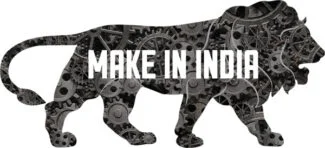~ Sangyukta Das
Launched by Honourable Prime Minister Narendra Modi on 25th September 2014, the Make In India campaign was quite the game-changer for India and a head-turner for the world. It was one of the most significant decisions the BJP government took apart from the demonetization and the GST implementations. Amid concerns that India was rated “the Fragile Five” and with most entrepreneurs moving out due to low ranks in the ease of doing business index, this campaign was introduced at a crucial time. With an aim to attract more businesses from abroad, it has been devised to transform India from a raw material exporter nation to a more manufactured goods exporter nation. It called for citizens, small businesses, and business leaders to invite partners, take action, invest and create opportunities, and help India grow in its stature and take more control in the world’s power dynamics. Mainly aimed at the middle class, this campaign was started to give the incentive to indulge in more designing and manufacturing so that India could climb back up the ladder and make its presence felt.
Significance of the Campaign
The campaign had made a humble beginning with the Swadeshi movement, several decades ago under the ambit of the Father of the Nation, Mahatma Gandhi. The approach to promote the use of ‘khadi’ clothes was a way to hit two birds with one stone, empowering people with technology while also opposing the British’s commercial interests. Many Gandhian philosophy experts have said that the ‘Khadi’ movement was a step to promote self-governance and self-sufficiency. They have also remarked that Gandhi had ample foresight to start the movement by realizing that India needed economic self-sufficiency to be free and grow. According to former Chief Minister of Rajasthan, Vasundhara Raje, Mahatma Gandhi’s Swadeshi movement, and the ‘Make in India’ program are based on the same ideology. During an event in 2015, she mentioned that the campaign encouraged a feeling of using and making ‘swadeshi’ amongst everyone, imperative for making India economically independent and self-sufficient.
Establishments
The Make in India campaign focuses mainly on 25 sectors, ranging from aviation and automobile to wellness. Under this, the maximum limit in FDI in the defence sector has been raised to 40%, and there are plans to construct five industrial corridors that span the whole country and connect the major cities. Many schemes have been launched as a part of the campaign like Skill India, Startup India, Digital India, and the most recent is the Atmanirbhar Bharat Abhiyan. This project’s objectives include raising manufacturing sector growth to 12-14% per year, creating 100 million additional jobs by 2022, creating required skill sets among the urban poor and rural migrants, and increasing the share of the manufacturing sector in the GDP up to 25%. The advantages of this campaign are that it will help to generate employment opportunities, increase the strength of the rupee when FDI increases, small manufacturers will get the boost that it needed for a long time, and finally, the GDP will rise, dilating the economic growth. The campaign’s progress has been magnanimous and includes opening around 356 million bank accounts and introducing one of the most awaited tax reforms, the Goods and Services Tax (GST).
The campaign has also given lots of opportunities to students and has helped them to develop their skills. There have been ‘Make in India’ projects for students, which have attracted a lot of participation with innovative ideas and policies to be implemented. The campaign opens doorways to more innovation, investment, and implementation within the frontiers of India.
The Bottom Line
In my opinion, the National Education Policy (NEP 2020) and the Atmanirbhar Bharat Abhiyan were two significant steps towards fulfilling this campaign’s goals within a limited time. Even though India has climbed fourteen places in the World Ease of Doing Business Index, it still has a long way to go till it achieves considerable GDP growth recovers from the chaos that it has fallen into due to the COVID pandemic. With a hope that more energy and optimism will be visible once the sectors start recovering from the pandemic’s downfall, India can definitely see itself as the remarkable leading economic powers soon.
Must read- The Increasing Importance of AYUSH


